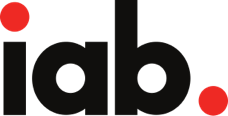Banner Format & Sizes
Standardizes Ad Formats
The most commonly used types of display are the standardized ad formats from IAB. Before IAB introduced standardized ad formats, the digital advertising landscape was fragmented, with each publisher using different ad specifications. This lack of consistency created inefficiencies, making it difficult for advertisers to scale campaigns across multiple platforms


What is the IAB?
The Interactive Advertising Bureau (IAB) is a global organization that develops industry standards, conducts research, and provides legal support for the digital advertising industry. Founded in 1996, the IAB works with advertisers, agencies, and publishers to create a more efficient and transparent digital advertising ecosystem. One of its key contributions is the development of standardized ad formats, which facilitate smoother transactions between buyers and sellers of digital ad space.
Common IAB Standard Ad Formats and Sizes
The IAB has defined several ad types of banners with standard ad sizes and formats that are widely adopted across the industry. Some of the most common include:

Leaderboard (728x90 px)
Typically placed at the top of a webpage, providing high visibility.

Medium Rectangle (300x250 px)
One of the most popular ad formats, often found within content or sidebars.

Wide Skyscraper (160x600 px)
A vertical format commonly used in website sidebars.

Billboard (970x250 px)
A large, high-impact format used for premium ad placements.

Mobile Banner (320x50 px)
A compact format optimized for mobile screens.

Large Rectangle (336x280 px)
A larger variation of the medium rectangle, providing more visibility.

Half Page (300x600 px)
A taller ad unit offering greater engagement potential.

Square (250x250 px)
A compact and flexible format often used in responsive designs.

Small Square (200x200 px)
A mini version of the square banner.
Display Ad Specifications and Requirements
When designing banner ads for digital campaigns, advertisers must adhere to standard specifications to ensure compatibility across platforms. Key specifications include:

File Formats:
JPEG, PNG, GIF, HTML5

File Size Limit:
Typically under 150 KB for faster loading times

Animation Length:
Max 30 seconds for animated ads

Click URL:
Ensure tracking links and UTMs are correctly implemented

Importance of Standardized Digital Ad Sizes
IAB standard display sizes, including 728x90 leaderboard ads, 300x250 medium rectangles, and 160x600 skyscraper display ads, ensure that campaigns are scalable and effective across platforms. These standard formats facilitate seamless integration into networks like Google Ads and the broader digital advertising ecosystem.

Conclusion
IAB standard ad formats have played a crucial role in the growth of digital advertising by providing a consistent framework for ad creation and placement. These standards help advertisers maximize their reach, streamline campaign execution, and enhance the overall user experience. As the digital landscape evolves, the IAB continues to update its guidelines to accommodate new technologies and advertising trends, ensuring a more effective and user-friendly online advertising ecosystem. By following IAB display ad specs, advertisers can optimize their campaigns for Google Standard Display Ads, Display Ad Banner Sizes, and Digital Display Ad Dimensions to achieve the best results.